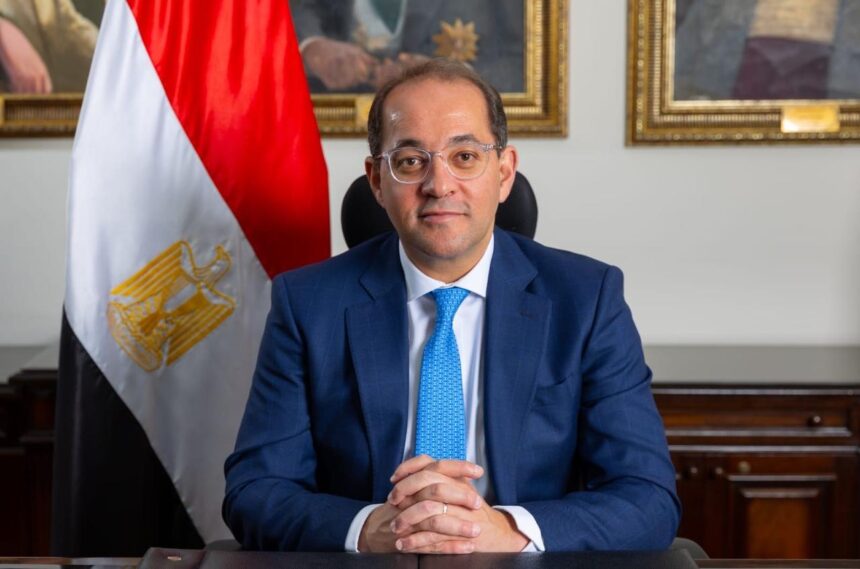Egypt Narrows Financing Gap with Gulf Capital Inflows
Egypt narrows its FY2025 financing gap as IMF disbursements and Gulf investments boost reserves and market confidence; EGX:EGX30 rallies while EGY Eurobond yields tighten on improved external liquidity.

Egypt’s external financing gap has narrowed materially in 2025 as a decisive combination of IMF disbursements, substantial Gulf capital inflows, and an accelerating privatization pipeline have successfully restored near-term balance-sheet breathing room for Cairo. After peaking in FY2024/25 with IMF estimates of an external financing shortfall in the order of US $11.4 billion, subsequent program updates and rapid asset sales have trimmed that gap to roughly US $5.8 to US $8.2 billion depending on the execution scenario. Simultaneously, official reserve buffers have risen, and sovereign liquidity metrics have visibly improved.
The headline picture is one of cautious stabilization: real GDP growth accelerated to approximately 4 to 4.5 percent in the 2024/25 fiscal year following decisive reform implementation, inflation has fallen from peak rates above 30 percent to the mid-teens, and the government has secured sizable Gulf sovereign and private investments that provide both critical foreign exchange and confidence to international markets.
The mechanism driving this improvement is threefold and mutually reinforcing. First, the IMF’s Extended Fund Facility and related disbursements—including a US $1.2 billion tranche tied to the fourth review and access to resilience windows—have directly supplemented reserves and signaled conditional policy credibility. Second, Gulf capital inflows have supplied large, often front-loaded foreign-currency receipts.
Headline commitments like the recent Qatari and Emirati coastal development deals (totaling in the tens of billions of dollars) provide upfront payments and long-term investment pipelines that materially reduce immediate external financing needs. Third, Cairo’s privatization and revenue measures embedded in the fiscal package are expected to generate crucial one-off non-debt receipts and recurring revenue gains; the 2025/26 budget projects higher non-tax and privatization receipts which are explicitly intended to narrow the financing gap. Together these channels have shortened the path to reserve adequacy, lowered rollover pressure on short-dated external debt, and begun to normalize the sovereign’s external financing calendar.
Macroeconomically the effects are tangible across the entire economy. Egypt’s public-debt-to-GDP metric, which climbed to uncomfortable levels above 90 percent in 2024/25, is now projected downward if privatization proceeds materialize as planned and fiscal consolidation continues without major political disruption; policymakers target reducing debt toward the low-80s percent range over the medium term.
External reserves have been bolstered to a level that approaches 4 to 5 months of imports once Gulf inflows and IMF lines are accounted for, a significant improvement from sub-optimal import cover earlier in the adjustment phase. On the growth side, the stabilization of the exchange rate and improved liquidity has directly supported manufacturing and tourism recovery, sustaining momentum toward the IMF-anchored 4 percent plus growth trajectory. For the banking sector, improved FX availability reduces the risk of forced liquidations and eases foreign currency lending constraints for exporters and corporates, likely lifting corporate investment and long-term trade flows.
Markets have currently priced the change as a reduction in tail risk rather than a fundamental reset of the macro picture. Egyptian equities (EGX:EGX30) have outperformed regional peers intermittently as investor sentiment improved, while yields on Egypt’s hard-currency sovereign bonds (EGY) have tightened modestly.
Sovereign Eurobond yields for medium-term maturities have fallen by several hundred basis points from their crisis peaks, reflecting lower perceived rollover risk and the positive anchor signal provided by large Gulf investments. Local-currency treasuries continue to offer elevated yields, however, as domestic inflation and ongoing fiscal financing needs remain real constraints. Foreign portfolio inflows have resumed cautiously, but foreign investor participation remains strictly contingent on concrete privatization receipts and sustained, full IMF program compliance.
Forward risks and constraints deserve critical emphasis. Execution risk on large Gulf projects and privatizations remains high: if upfront payments are delayed or conditional clauses stall, the financing gap could reopen quickly, necessitating emergency funding. Political economy risks also persist; fiscal consolidation measures and sensitive subsidy rationalization remain socially and politically sensitive and could be reversed under domestic pressure, which would severely undermine creditor confidence.
Structural vulnerabilities—persistent external account volatility, tourism swings linked to regional security, and a narrow export base—mean that short-term balance-sheet repairs must be complemented by durable export diversification and productivity gains to permanently sustain lower financing needs.
Over the next 12–18 months, measurable indicators will definitively determine whether the narrowing of the gap is durable: (1) the size of realized privatization receipts and upfront foreign direct investment (target: US $15 to US $25 billion of committed physical and financial investments over two years), (2) reserve levels adjusted for liquid usable buffers (target: 4 months of imports excluding project-tied inflows), (3) sovereign Eurobond spreads (target: compression of 150 to 300 basis points from peak levels), and (4) fiscal primary balance improvement (target: primary surplus consistent with debt-to-GDP edging toward low-80s percent within three years).
If these indicators move in the intended direction, Egypt will have converted headline financing wins into a credible path back to macrostability; if not, the country remains dangerously exposed to renewed external stress and volatile market repricing.





